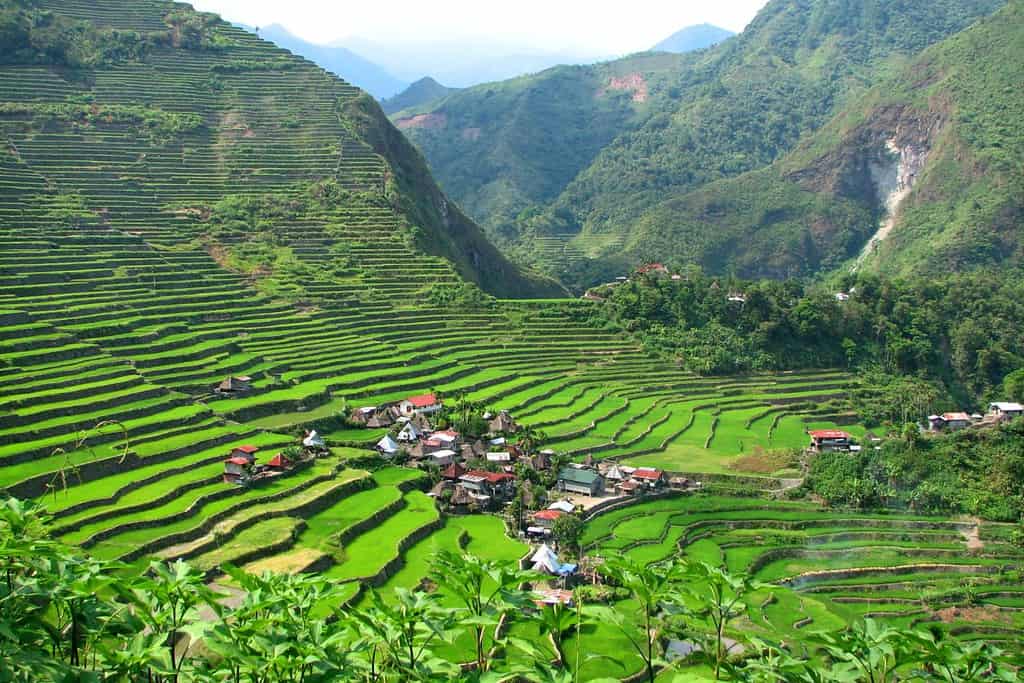Table of Contents
Where is the Philippines located? The Philippines is a country situated in Southeast Asia, in the western Pacific Ocean region. It comprises an archipelago consisting of thousands of islands.
The Philippines is positioned in the western part of the Pacific Ocean, with waters of the South China Sea to the west and the Philippine Sea to the east. It shares maritime boundaries with several neighboring countries. To the north, it is close to Taiwan. To the northeast, it has maritime boundaries with Japan. To the east, it is bordered by the waters of Palau. To the south, it shares maritime boundaries with Indonesia and Malaysia.
Where is the Philippines located: Southeast Asia.
Location of the Philippines on the World Map
Philippines World
Map of Philippines.
Philippines Profile – Where is the Philippines located
Here are 10 of the most important facts about the Philippines:
- Official Name: Republic of the Philippines
- Capital City: Manila
- Population: Approximately 113 million (as of 2021)
- Official Language: Filipino and English
- Currency: Philippine Peso (PHP)
- Major Religion: Roman Catholicism (predominantly)
- Government: Presidential republic
- Area: Approximately 300,000 square kilometers
- GDP (Gross Domestic Product): $367.1 billion (as of 2021)
- Main Exports: Electronics, machinery and equipment, mineral products, and agricultural products.

Borders of Philippines
The Philippines shares land borders with two countries.
| Bordering Country | Approximate Length of Border (in kilometers) |
|---|---|
| Malaysia | 1,581 km |
| Indonesia | 1,905 km |
Philippines Map
Navigate over this map with your mouse to discover the Philippines map location.
Philippines
Most Extreme Points of the Philippines
The Philippines has several extreme points in different directions:
- Northernmost Point: Located near the border with Taiwan, just off the northern coast of Luzon Island.
- Southernmost Point: Situated at the southern tip of Tawi-Tawi Island, near the border with Malaysia.
- Easternmost Point: Found along the eastern coastline of the Philippines, near the town of Pusan Point in Davao Oriental.
- Westernmost Point: Positioned along the western coastline of the Philippines, near the town of Sofronio Española in Palawan.
Highest Points of the Philippines
The highest point in the Philippines is Mount Apo, which reaches an elevation of approximately 2,954 meters above sea level. It is part of the Philippine mountain range.
| No. | Mountain | Elevation (meters) |
|---|---|---|
| 1 | Mount Apo | 2,954 |
| 2 | Mount Dulang-dulang | 2,938 |
| 3 | Mount Pulag | 2,926 |
| 4 | Mount Kitanglad | 2,899 |
| 5 | Mount Tabayoc | 2,842 |
How big is the Philippines?
The Philippines spans an area of about 300,000 square kilometers, ranking it as the 73rd largest country globally.
Comparison with Neighboring Countries
Here is a comparison of the Philippines with its neighboring countries based on approximate size and population as of 2021:
| Country | Approximate Size (sq. km) | Approximate Population | Philippines’s Size Compared to Neighboring Country | Philippines’s Population Compared to Neighboring Country |
|---|---|---|---|---|
| Taiwan | 36,193 | 23.6 million | 4.23 times smaller | 0.54 times smaller |
| Malaysia | 330,803 | 32.4 million | 0.46 times smaller | 0.39 times smaller |
| Indonesia | 1,904,569 | 273.5 million | 0.08 times smaller | 0.03 times smaller |
| Brunei | 5,765 | 0.44 million | 13.49 times smaller | 12.72 times smaller |
| Vietnam | 331,212 | 98.2 million | 0.46 times smaller | 0.14 times smaller |
What to Visit in the Philippines?
The Philippines is a country that boasts a rich tapestry of culture, history, and natural beauty. Here are the top 10 tourist attractions:
- Manila: The capital city of the Philippines, Manila is a bustling metropolis where you can experience a mix of modernity and history. Explore historical sites like Intramuros, visit vibrant markets, and indulge in diverse culinary delights.
- Boracay: Known for its stunning beaches, Boracay is a tropical paradise perfect for water sports enthusiasts and beach lovers. White Beach and Puka Shell Beach are must-visit spots.
- Palawan: This province is famous for its pristine islands and underground river in Puerto Princesa, a UNESCO World Heritage Site. Don’t miss El Nido and Coron for their breathtaking landscapes.
- Cebu: Discover historical landmarks like Magellan’s Cross, enjoy the vibrant Sinulog Festival, and dive into the crystal-clear waters around Moalboal and Oslob.
- Bohol: Home to the Chocolate Hills and the adorable tarsiers, Bohol offers a unique blend of natural wonders and cultural heritage.
- Davao City: Explore the Philippines’ largest city in Mindanao, known for its vibrant street food scene, Mount Apo (the country’s highest peak), and the Philippine Eagle Center.
- Baguio: This mountain city provides a cool escape with its refreshing climate. Enjoy scenic views, visit the Botanical Garden, and try the famous Baguio strawberries.
- Vigan: Immerse yourself in Spanish colonial history by strolling through the well-preserved streets of Vigan. The city is a UNESCO World Heritage Site.
- Cagayan de Oro: For adventure seekers, Cagayan de Oro offers white-water rafting and zip-lining experiences. It’s a great place to get your adrenaline fix.
- Siargao: Surfing enthusiasts will find their paradise in Siargao, with Cloud 9 being a world-famous surf spot. The island also offers serene lagoons and natural pools.
These Philippines destinations offer a wide array of experiences, from exploring historical sites and natural wonders to enjoying the warmth and hospitality of the Filipino people. Please be aware that some places may have specific entry requirements or restrictions, so it’s essential to check before planning your visit, especially when visiting culturally significant sites.
More About Philippines
[the-post-grid id=”50412″ title=”Philippines Main page”]
